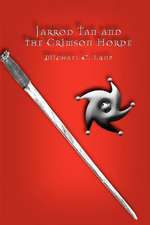At the Mountains of Madness: The Penguin English Library
Autor H. P. Lovecraften Limba Engleză Paperback – 6 iun 2018
An expedition to Antarctica goes horribly wrong as a group of explorers stumbles upon some mysterious ancient ruins, with devastating consequences.At the Mountains of Madnessranks among Lovecraft's most terrifying novellas, and is a firm favourite among fans of classic horror.
The Penguin English Library - collectable general readers' editions of the best fiction in English, from the eighteenth century to the end of the Second World War.
| Toate formatele și edițiile | Preț | Express |
|---|---|---|
| Paperback (15) | 41.19 lei 26-32 zile | +13.07 lei 10-14 zile |
| Penguin Books – 6 iun 2018 | 41.19 lei 26-32 zile | +13.07 lei 10-14 zile |
| Del Rey Books – 31 aug 1991 | 42.45 lei 3-5 săpt. | |
| – | 47.05 lei 3-5 săpt. | |
| CREATESPACE – | 48.33 lei 3-5 săpt. | |
| CREATESPACE – | 52.92 lei 3-5 săpt. | |
| CreateSpace Independent Publishing Platform – 31 mar 2010 | 54.14 lei 3-5 săpt. | |
| Hythloday Press – | 58.66 lei 3-5 săpt. | |
| – | 68.92 lei 3-5 săpt. | |
| KUPERARD (BRAVO LTD) – 8 apr 2005 | 83.80 lei 3-5 săpt. | +14.15 lei 10-14 zile |
| Prohyptikon Publishing Inc. – 28 aug 2010 | 49.98 lei 6-8 săpt. | |
| – | 58.04 lei 6-8 săpt. | |
| Lulu.Com – 3 noi 2020 | 59.44 lei 6-8 săpt. | |
| – | 62.49 lei 6-8 săpt. | |
| LIGHTNING SOURCE INC – 24 oct 2018 | 121.64 lei 17-23 zile | |
| CreateSpace Independent Publishing Platform – 14 dec 2015 | 209.14 lei 6-8 săpt. | |
| Hardback (3) | 132.16 lei 6-8 săpt. | |
| Positronic Publishing – 3 apr 2018 | 132.16 lei 6-8 săpt. | |
| Lulu.Com – 4 noi 2020 | 164.93 lei 6-8 săpt. | |
| Lulu.Com – 16 iun 2016 | 167.08 lei 6-8 săpt. | |
| CD-Audio (1) | 92.94 lei 3-5 săpt. | |
| BLACKSTONE AUDIO BOOKS – 31 mai 2013 | 92.94 lei 3-5 săpt. |
Din seria The Penguin English Library
-
 Preț: 41.24 lei
Preț: 41.24 lei - 16%
 Preț: 47.67 lei
Preț: 47.67 lei - 17%
 Preț: 41.97 lei
Preț: 41.97 lei - 17%
 Preț: 41.48 lei
Preț: 41.48 lei - 16%
 Preț: 42.89 lei
Preț: 42.89 lei - 13%
 Preț: 45.79 lei
Preț: 45.79 lei - 12%
 Preț: 58.46 lei
Preț: 58.46 lei - 15%
 Preț: 44.12 lei
Preț: 44.12 lei -
 Preț: 50.42 lei
Preț: 50.42 lei -
 Preț: 51.69 lei
Preț: 51.69 lei - 17%
 Preț: 42.16 lei
Preț: 42.16 lei - 13%
 Preț: 57.71 lei
Preț: 57.71 lei - 13%
 Preț: 51.64 lei
Preț: 51.64 lei - 16%
 Preț: 42.66 lei
Preț: 42.66 lei - 13%
 Preț: 51.51 lei
Preț: 51.51 lei - 15%
 Preț: 44.15 lei
Preț: 44.15 lei - 14%
 Preț: 44.27 lei
Preț: 44.27 lei - 17%
 Preț: 42.19 lei
Preț: 42.19 lei - 15%
 Preț: 44.06 lei
Preț: 44.06 lei - 16%
 Preț: 42.54 lei
Preț: 42.54 lei - 15%
 Preț: 44.14 lei
Preț: 44.14 lei - 16%
 Preț: 42.45 lei
Preț: 42.45 lei - 13%
 Preț: 50.94 lei
Preț: 50.94 lei - 14%
 Preț: 44.66 lei
Preț: 44.66 lei - 10%
 Preț: 61.77 lei
Preț: 61.77 lei - 16%
 Preț: 42.69 lei
Preț: 42.69 lei - 13%
 Preț: 45.82 lei
Preț: 45.82 lei - 16%
 Preț: 43.17 lei
Preț: 43.17 lei - 17%
 Preț: 41.72 lei
Preț: 41.72 lei - 15%
 Preț: 43.87 lei
Preț: 43.87 lei - 11%
 Preț: 54.06 lei
Preț: 54.06 lei - 15%
 Preț: 48.77 lei
Preț: 48.77 lei -
 Preț: 49.85 lei
Preț: 49.85 lei - 15%
 Preț: 43.23 lei
Preț: 43.23 lei - 14%
 Preț: 44.85 lei
Preț: 44.85 lei - 15%
 Preț: 43.32 lei
Preț: 43.32 lei - 14%
 Preț: 44.55 lei
Preț: 44.55 lei - 16%
 Preț: 42.32 lei
Preț: 42.32 lei - 14%
 Preț: 44.93 lei
Preț: 44.93 lei - 16%
 Preț: 42.45 lei
Preț: 42.45 lei - 14%
 Preț: 44.85 lei
Preț: 44.85 lei - 17%
 Preț: 41.46 lei
Preț: 41.46 lei - 17%
 Preț: 41.51 lei
Preț: 41.51 lei - 16%
 Preț: 42.91 lei
Preț: 42.91 lei - 13%
 Preț: 46.26 lei
Preț: 46.26 lei - 14%
 Preț: 44.55 lei
Preț: 44.55 lei - 18%
 Preț: 41.19 lei
Preț: 41.19 lei - 13%
 Preț: 45.98 lei
Preț: 45.98 lei - 11%
 Preț: 53.66 lei
Preț: 53.66 lei - 16%
 Preț: 42.77 lei
Preț: 42.77 lei
Preț: 41.19 lei
Preț vechi: 49.98 lei
-18% Nou
Puncte Express: 62
Preț estimativ în valută:
7.88€ • 8.18$ • 6.59£
7.88€ • 8.18$ • 6.59£
Carte disponibilă
Livrare economică 27 februarie-05 martie
Livrare express 11-15 februarie pentru 23.06 lei
Preluare comenzi: 021 569.72.76
Specificații
ISBN-13: 9780241341315
ISBN-10: 0241341310
Pagini: 128
Dimensiuni: 129 x 198 x 7 mm
Greutate: 0.1 kg
Editura: Penguin Books
Colecția Penguin Classics
Seria The Penguin English Library
Locul publicării:London, United Kingdom
ISBN-10: 0241341310
Pagini: 128
Dimensiuni: 129 x 198 x 7 mm
Greutate: 0.1 kg
Editura: Penguin Books
Colecția Penguin Classics
Seria The Penguin English Library
Locul publicării:London, United Kingdom
Notă biografică
H.P.
Lovecraftwas
born
in
Providence,
Rhode
Island
in
1890.
He
was
self-educated
and
lived
in
his
birthplace
all
his
life,
working
as
a
freelance
writer,
journalist,
and
ghostwriter.
His
best
work
-
including
some
sixty
or
so
short
stories
-
was
published
from
1923
onwards
in
the
pulp
magazineWeird
Tales.
He
died
in
1937,
in
poverty
and
virtually
unknown;
today
he
is
recognized
as
one
of
the
great
masters
of
supernatural
fiction.
Recenzii
“One of the greatest short novels in American literature, and a key text in my own understanding of what that literature can do.”
–MICHAEL CHABON
“Lovecraft’s fiction is one of the cornerstones of modern horror.”
–CLIVE BARKER
From the Trade Paperback edition.
–MICHAEL CHABON
“Lovecraft’s fiction is one of the cornerstones of modern horror.”
–CLIVE BARKER
From the Trade Paperback edition.
Extras
Chapter 1
I am forced into speech because men of science have refused to follow my advice without knowing why. It is altogether against my will that I tell my reasons for opposing this contemplated invasion of the antarctic with its vast fossil-hunt and its wholesale boring and melting of the ancient ice-cap and I am the more reluctant because my warning may be in vain. Doubt of the real facts, as I must reveal them, is inevitable; yet if I suppressed what will seem extravagant and incredible there would be nothing left. The hitherto withheld photographs, both ordinary and a‘rial, will count in my favour; for they are damnably vivid and graphic. Still, they will be doubted because of the great lengths to which clever fakery can be carried. The ink drawings, of course, will be jeered at as obvious impostures; notwithstanding a strangeness of technique which art experts ought to remark and puzzle over. In the end I must rely on the judgment and standing of the few scientific leaders who have, on the one hand, sufficient independence of thought to weigh my data on its own hideously convincing merits or in the light of certain primordial and highly baffling myth-cycles; and on the other hand, sufficient influence to deter the exploring world in general from any rash and overambitious programme in the region of those mountains of madness. It is an unfortunate fact that relatively obscure men like myself and my associates, connected only with a small university, have little chance of making an impression where matters of a wildly bizarre or highly controversial nature are concerned. It is further against us that we are not, in the strictest sense, specialists in the fields which came primarily to be concerned.
As a geologist my object in leading the Miskatonic University Expedition was wholly that of securing deep-level specimens of rock and soil from various parts of the antarctic continent, aided by the remarkable drill devised by Prof. Frank H. Pabodie of our engineering department. I had no wish to be a pioneer in any other field than this; but I did hope that the use of this new mechanical appliance at different points along previously explored paths would bring to light materials of a sort hitherto unreached by the ordinary methods of collection. Pabodie's drilling apparatus, as the public already knows from our reports, was unique and radical in its lightness, portability, and capacity to combine the ordinary artesian drill principle with the principle of the small circular rock drill in such a way as to cope quickly with strata of varying hardness. Steel head, jointed rods, gasoline motor, collapsible wooden derrick, dynamiting paraphernalia, cording, rubbish-removal auger, and sectional piping for bores five inches wide and up to 1,000 feet deep all formed, with needed accessories, no greater load than three seven-dog sledges could carry; this being made possible by the clever aluminum alloy of which most of the metal objects were fashioned. Four large Dornier a‘roplanes, designed especially for the tremendous altitude flying necessary on the antarctic plateau and with added fuel-warming and quick-starting devices worked out by Pabodie, could transport our entire expedition from a base at the edge of the great ice barrier to various suitable inland points, and from these points a sufficient quota of dogs would serve us. We planned to cover as great an area as one antarctic seasonor longer, if absolutely necessary would permit, operating mostly in the mountain-ranges and on the plateau south of Ross Sea; regions explored in varying degree by Shackleton, Amundsen, Scott, and Byrd.
With frequent changes of camp, made by a‘roplane and involving distances great enough to be of geological significance, we expected to unearth a quite unprecedented amount of material; especially in the pre-Cambrian strata of which so narrow a range of antarctic specimens had previously been secured. We wished also to obtain as great as possible a variety of the upper fossiliferous rocks, since the primal life-history of this bleak realm of ice and death is of the highest importance to our knowledge of the earthÕs past. That the antarctic continent was once temperate and even tropical, with a teeming vegetable and animal life of which the lichens, marine fauna, arachnida, and penguins of the northern edge are the only survivals, is a matter of common information; and we hoped to expand that information in variety, accuracy, and detail. When a simple boring revealed fossiliferous signs, we would enlarge the aperture by blasting in order to get specimens of suitable size and condition. Our borings, of varying depth according to the promise held out by the upper soil or rock, were to be confined to exposed or nearly exposed land surfaces these inevitably being slopes and ridges because of the mile or two-mile thickness of solid ice overlying the lower levels. We could not afford to waste drilling depth on any considerable amount of mere glaciation, though Pabodie had worked out a plan for sinking copper electrodes in thick clusters of borings and melting off limited areas of ice with current from a gasoline-driven dynamo. It is this plan which we could not put into effect except experimentally on an expedition such as oursÑthat the coming Starkweather-Moore Expedition proposes to follow despite the warnings I have issued since our return from the antarctic.
The public knows of the Miskatonic Expedition through our frequent wireless reports to the Arkham Advertiser and Associated Press, and through the later articles of Pabodie and myself. We consisted of four men from the UniversityÑPabodie, Lake of the biology department, Atwood of the physics department (also a meteorologist), and I representing geology and having nominal commandÑbesides sixteen assistants; seven graduate students from Miskatonic and nine skilled mechanics. Of these sixteen, twelve were qualified a‘roplane pilots, all but two of whom were competent wireless operators. Eight of them understood navigation with compass and sextant, as did Pabodie, Atwood, and I. In addition, of course, our two ships wooden ex-whalers, reinforced for ice conditions and having auxiliary steamÑwere fully manned. The Nathaniel Derby Pickman Foundation, aided by a few special contributions, financed the expedition; hence our preparations were extremely thorough despite the absence of great publicity. The dogs, sledges, machines, camp materials, and unassembled parts of our five planes were delivered in Boston, and there our ships were loaded. We were marvellously well-equipped for our specific purposes, and in all matters pertaining to supplies, regimen, transportation, and camp construction we profited by the excellent example of our many recent and exceptionally brilliant predecessors. It was the unusual number and fame of these predecessors which made our own expeditionÑample though it wasÑso little noticed by the world at large. As the newspapers told, we sailed from Boston Harbour on September 2, 1930; taking a leisurely course down the coast and through the Panama Canal, and stopping at Samoa and Hobart, Tasmania, at which latter place we took on final supplies. None of our exploring party had ever been in the polar regions before, hence we all relied greatly on our ship captainsÑJ. B. Douglas, commanding the brig Arkham, and serving as commander of the sea party, and Georg Thorfinnssen, commanding the barque Miskatonic both veteran whalers in antarctic waters.
As we left the inhabited world behind the sun sank lower and lower in the north, and stayed longer and longer above the horizon each day. At about 62° South Latitude we sighted our first icebergsÑtable-like objects with vertical sides and just before reaching the Antarctic Circle, which we crossed on October 20 with appropriately quaint ceremonies, we were considerably troubled with field ice. The falling temperature bothered me considerably after our long voyage through the tropics, but I tried to brace up for the worse rigours to come. On many occasions the curious atmospheric effects enchanted me vastly; these including a strikingly vivid miragethe first I had ever seenÑin which distant bergs became the battlements of unimaginable cosmic castles. Pushing through the ice, which was fortunately neither extensive nor thickly packed, we regained open water at South Latitude 67°, East Longitude 175°. On the morning of October 26 a strong Òland blinkÓ appeared on the south, and before noon we all felt a thrill of excitement at beholding a vast, lofty, and snow-clad mountain chain which opened out and covered the whole vista ahead. At last we had encountered an outpost of the great unknown continent and its cryptic world of frozen death. These peaks were obviously the Admiralty Range discovered by Ross, and it would now be our task to round Cape Adare and sail down the east coast of Victoria Land to our contemplated base on the shore of McMurdo Sound at the foot of the volcano Erebus in South Latitude 77° 9¢. The last lap of the voyage was vivid and fancy-stirring, great barren peaks of mystery looming up constantly against the west as the low northern sun of noon or the still lower horizon-grazing southern sun of midnight poured its hazy reddish rays over the white snow, bluish ice and water lanes, and black bits of exposed granite slope.
Through the desolate summits swept raging intermittent gusts of the terrible antarctic wind; whose cadences sometimes held vague suggestions of a wild and half-sentient musical piping, with notes extending over a wide range, and which for some subconscious mnemonic reason seemed to me disquieting and even dimly terrible. Something about the scene reminded me of the strange and disturbing Asian paintings of Nicholas Roerich, and of the still stranger and more disturbing descriptions of the evilly fabled plateau of Leng which occur in the dreaded Necronomicon of the mad Arab Abdul Alhazred. I was rather sorry, later on, that I had ever looked into that monstrous book at the college library. On the seventh of November, sight of the westward range having been temporarily lost, we passed Franklin Island; and the next day descried the cones of Mts. Erebus and Terror on Ross Island ahead, with the long line of the Parry Mountains beyond. There now stretched off to the east the low, white line of the great ice barrier; rising perpendicularly to a height of 200 feet like the rocky cliffs of Quebec, and marking the end of southward navigation. In the afternoon we entered McMurdo Sound and stood off the coast in the lee of smoking Mt. Erebus. The scoriac peak towered up some 12,700 feet against the eastern sky, like a Japanese print of the sacred Fujiyama; while beyond it rose the white, ghost-like height of Mt. Terror, 10,900 feet in altitude, and now extinct as a volcano. Puffs of smoke from Erebus came intermittently, and one of the graduate assistantsa brilliant young fellow named Danforth pointed out what looked like lava on the snowy slope; remarking that this mountain, discovered in 1840, had undoubtedly been the source of Poe's image when he wrote seven years later of the lavas that restlessly roll Their sulphurous currents down Yaanek In the ultimate climes of the poleÑ That groan as they roll down Mount Yaanek In the realms of the boreal pole.Ó Danforth was a great reader of bizarre material, and had talked a good deal of Poe.
I was interested myself because of the antarctic scene of Poe's only long story the disturbing and enigmatical Arthur Gordon Pym. On the barren shore, and on the lofty ice barrier in the background, myriads of grotesque penguins squawked and flapped their fins; while many fat seals were visible on the water, swimming or sprawling across large cakes of slowly drifting ice. Using small boats, we effected a difficult landing on Ross Island shortly after midnight on the morning of the 9th, carrying a line of cable from each of the ships and preparing to unload supplies by means of a breeches-buoy arrangement. Our sensations on first treading antarctic soil were poignant and complex, even though at this particular point the Scott and Shackleton expeditions had preceded us. Our camp on the frozen shore below the volcano's slope was only a provisional one; headquarters being kept aboard the Arkham. We landed all our drilling apparatus, dogs, sledges, tents, provisions, gasoline tanks, experimental ice-melting outfit, cameras both ordinary and a‘rial, a‘roplane parts, and other accessories, including three small portable wireless outfits (besides those in the planes) capable of communicating with the Arkham's large outfit from any part of the antarctic continent that we would be likely to visit. The ship's outfit, communicating with the outside world, was to convey press reports to the Arkham Advertiser's powerful wireless station on Kingsport Head, Mass. We hoped to complete our work during a single antarctic summer; but if this proved impossible we would winter on the Arkham, sending the Miskatonic north before the freezing of the ice for another summer's supplies.
I need not repeat what the newspapers have already published about our early work: of our ascent of Mt. Erebus; our successful mineral borings at several points on Ross Island and the singular speed with which Pabodie's apparatus accomplished them, even through solid rock layers; our provisional test of the small ice-melting equipment; our perilous ascent of the great barrier with sledges and supplies; and our final assembling of five huge a‘roplanes at the camp atop the barrier. The health of our land partytwenty men and 55 Alaskan sledge dogs was remarkable, though of course we had so far encountered no really destructive temperatures or windstorms. For the most part, the thermometer varied between zero and 20° or 25° above, and our experience with New England winters had accustomed us to rigours of this sort. The barrier camp was semi-permanent, and destined to be a storage cache for gasoline, provisions, dynamite, and other supplies. Only four of our planes were needed to carry the actual exploring material, the fifth being left with a pilot and two men from the ships at the storage cache to form a means of reaching us from the Arkham in case all our exploring planes were lost. Later, when not using all the other planes for moving apparatus, we would employ one or two in a shuttle transportation service between this cache and another permanent base on the great plateau from 600 to 700 miles southward, beyond Beardmore Glacier. Despite the almost unanimous accounts of appalling winds and tempests that pour down from the plateau, we determined to dispense with intermediate bases; taking our chances in the interest of economy and probable efficiency. Wireless reports have spoken of the breath-taking four-hour nonstop flight of our squadron on November 21 over the lofty shelf ice, with vast peaks rising on the west, and the unfathomed silences echoing to the sound of our engines. Wind troubled us only moderately, and our radio compasses helped us through the one opaque fog we encountered. When the vast rise loomed ahead, between Latitudes 83° and 84°, we knew we had reached Beardmore Glacier, the largest valley glacier in the world, and that the frozen sea was now giving place to a frowning and mountainous coast-line. At last we were truly entering the white, aeon-dead world of the ultimate south, and even as we realised it we saw the peak of Mt. Nansen in the eastern distance, towering up to its height of almost 15,000 feet.
From the Trade Paperback edition.
I am forced into speech because men of science have refused to follow my advice without knowing why. It is altogether against my will that I tell my reasons for opposing this contemplated invasion of the antarctic with its vast fossil-hunt and its wholesale boring and melting of the ancient ice-cap and I am the more reluctant because my warning may be in vain. Doubt of the real facts, as I must reveal them, is inevitable; yet if I suppressed what will seem extravagant and incredible there would be nothing left. The hitherto withheld photographs, both ordinary and a‘rial, will count in my favour; for they are damnably vivid and graphic. Still, they will be doubted because of the great lengths to which clever fakery can be carried. The ink drawings, of course, will be jeered at as obvious impostures; notwithstanding a strangeness of technique which art experts ought to remark and puzzle over. In the end I must rely on the judgment and standing of the few scientific leaders who have, on the one hand, sufficient independence of thought to weigh my data on its own hideously convincing merits or in the light of certain primordial and highly baffling myth-cycles; and on the other hand, sufficient influence to deter the exploring world in general from any rash and overambitious programme in the region of those mountains of madness. It is an unfortunate fact that relatively obscure men like myself and my associates, connected only with a small university, have little chance of making an impression where matters of a wildly bizarre or highly controversial nature are concerned. It is further against us that we are not, in the strictest sense, specialists in the fields which came primarily to be concerned.
As a geologist my object in leading the Miskatonic University Expedition was wholly that of securing deep-level specimens of rock and soil from various parts of the antarctic continent, aided by the remarkable drill devised by Prof. Frank H. Pabodie of our engineering department. I had no wish to be a pioneer in any other field than this; but I did hope that the use of this new mechanical appliance at different points along previously explored paths would bring to light materials of a sort hitherto unreached by the ordinary methods of collection. Pabodie's drilling apparatus, as the public already knows from our reports, was unique and radical in its lightness, portability, and capacity to combine the ordinary artesian drill principle with the principle of the small circular rock drill in such a way as to cope quickly with strata of varying hardness. Steel head, jointed rods, gasoline motor, collapsible wooden derrick, dynamiting paraphernalia, cording, rubbish-removal auger, and sectional piping for bores five inches wide and up to 1,000 feet deep all formed, with needed accessories, no greater load than three seven-dog sledges could carry; this being made possible by the clever aluminum alloy of which most of the metal objects were fashioned. Four large Dornier a‘roplanes, designed especially for the tremendous altitude flying necessary on the antarctic plateau and with added fuel-warming and quick-starting devices worked out by Pabodie, could transport our entire expedition from a base at the edge of the great ice barrier to various suitable inland points, and from these points a sufficient quota of dogs would serve us. We planned to cover as great an area as one antarctic seasonor longer, if absolutely necessary would permit, operating mostly in the mountain-ranges and on the plateau south of Ross Sea; regions explored in varying degree by Shackleton, Amundsen, Scott, and Byrd.
With frequent changes of camp, made by a‘roplane and involving distances great enough to be of geological significance, we expected to unearth a quite unprecedented amount of material; especially in the pre-Cambrian strata of which so narrow a range of antarctic specimens had previously been secured. We wished also to obtain as great as possible a variety of the upper fossiliferous rocks, since the primal life-history of this bleak realm of ice and death is of the highest importance to our knowledge of the earthÕs past. That the antarctic continent was once temperate and even tropical, with a teeming vegetable and animal life of which the lichens, marine fauna, arachnida, and penguins of the northern edge are the only survivals, is a matter of common information; and we hoped to expand that information in variety, accuracy, and detail. When a simple boring revealed fossiliferous signs, we would enlarge the aperture by blasting in order to get specimens of suitable size and condition. Our borings, of varying depth according to the promise held out by the upper soil or rock, were to be confined to exposed or nearly exposed land surfaces these inevitably being slopes and ridges because of the mile or two-mile thickness of solid ice overlying the lower levels. We could not afford to waste drilling depth on any considerable amount of mere glaciation, though Pabodie had worked out a plan for sinking copper electrodes in thick clusters of borings and melting off limited areas of ice with current from a gasoline-driven dynamo. It is this plan which we could not put into effect except experimentally on an expedition such as oursÑthat the coming Starkweather-Moore Expedition proposes to follow despite the warnings I have issued since our return from the antarctic.
The public knows of the Miskatonic Expedition through our frequent wireless reports to the Arkham Advertiser and Associated Press, and through the later articles of Pabodie and myself. We consisted of four men from the UniversityÑPabodie, Lake of the biology department, Atwood of the physics department (also a meteorologist), and I representing geology and having nominal commandÑbesides sixteen assistants; seven graduate students from Miskatonic and nine skilled mechanics. Of these sixteen, twelve were qualified a‘roplane pilots, all but two of whom were competent wireless operators. Eight of them understood navigation with compass and sextant, as did Pabodie, Atwood, and I. In addition, of course, our two ships wooden ex-whalers, reinforced for ice conditions and having auxiliary steamÑwere fully manned. The Nathaniel Derby Pickman Foundation, aided by a few special contributions, financed the expedition; hence our preparations were extremely thorough despite the absence of great publicity. The dogs, sledges, machines, camp materials, and unassembled parts of our five planes were delivered in Boston, and there our ships were loaded. We were marvellously well-equipped for our specific purposes, and in all matters pertaining to supplies, regimen, transportation, and camp construction we profited by the excellent example of our many recent and exceptionally brilliant predecessors. It was the unusual number and fame of these predecessors which made our own expeditionÑample though it wasÑso little noticed by the world at large. As the newspapers told, we sailed from Boston Harbour on September 2, 1930; taking a leisurely course down the coast and through the Panama Canal, and stopping at Samoa and Hobart, Tasmania, at which latter place we took on final supplies. None of our exploring party had ever been in the polar regions before, hence we all relied greatly on our ship captainsÑJ. B. Douglas, commanding the brig Arkham, and serving as commander of the sea party, and Georg Thorfinnssen, commanding the barque Miskatonic both veteran whalers in antarctic waters.
As we left the inhabited world behind the sun sank lower and lower in the north, and stayed longer and longer above the horizon each day. At about 62° South Latitude we sighted our first icebergsÑtable-like objects with vertical sides and just before reaching the Antarctic Circle, which we crossed on October 20 with appropriately quaint ceremonies, we were considerably troubled with field ice. The falling temperature bothered me considerably after our long voyage through the tropics, but I tried to brace up for the worse rigours to come. On many occasions the curious atmospheric effects enchanted me vastly; these including a strikingly vivid miragethe first I had ever seenÑin which distant bergs became the battlements of unimaginable cosmic castles. Pushing through the ice, which was fortunately neither extensive nor thickly packed, we regained open water at South Latitude 67°, East Longitude 175°. On the morning of October 26 a strong Òland blinkÓ appeared on the south, and before noon we all felt a thrill of excitement at beholding a vast, lofty, and snow-clad mountain chain which opened out and covered the whole vista ahead. At last we had encountered an outpost of the great unknown continent and its cryptic world of frozen death. These peaks were obviously the Admiralty Range discovered by Ross, and it would now be our task to round Cape Adare and sail down the east coast of Victoria Land to our contemplated base on the shore of McMurdo Sound at the foot of the volcano Erebus in South Latitude 77° 9¢. The last lap of the voyage was vivid and fancy-stirring, great barren peaks of mystery looming up constantly against the west as the low northern sun of noon or the still lower horizon-grazing southern sun of midnight poured its hazy reddish rays over the white snow, bluish ice and water lanes, and black bits of exposed granite slope.
Through the desolate summits swept raging intermittent gusts of the terrible antarctic wind; whose cadences sometimes held vague suggestions of a wild and half-sentient musical piping, with notes extending over a wide range, and which for some subconscious mnemonic reason seemed to me disquieting and even dimly terrible. Something about the scene reminded me of the strange and disturbing Asian paintings of Nicholas Roerich, and of the still stranger and more disturbing descriptions of the evilly fabled plateau of Leng which occur in the dreaded Necronomicon of the mad Arab Abdul Alhazred. I was rather sorry, later on, that I had ever looked into that monstrous book at the college library. On the seventh of November, sight of the westward range having been temporarily lost, we passed Franklin Island; and the next day descried the cones of Mts. Erebus and Terror on Ross Island ahead, with the long line of the Parry Mountains beyond. There now stretched off to the east the low, white line of the great ice barrier; rising perpendicularly to a height of 200 feet like the rocky cliffs of Quebec, and marking the end of southward navigation. In the afternoon we entered McMurdo Sound and stood off the coast in the lee of smoking Mt. Erebus. The scoriac peak towered up some 12,700 feet against the eastern sky, like a Japanese print of the sacred Fujiyama; while beyond it rose the white, ghost-like height of Mt. Terror, 10,900 feet in altitude, and now extinct as a volcano. Puffs of smoke from Erebus came intermittently, and one of the graduate assistantsa brilliant young fellow named Danforth pointed out what looked like lava on the snowy slope; remarking that this mountain, discovered in 1840, had undoubtedly been the source of Poe's image when he wrote seven years later of the lavas that restlessly roll Their sulphurous currents down Yaanek In the ultimate climes of the poleÑ That groan as they roll down Mount Yaanek In the realms of the boreal pole.Ó Danforth was a great reader of bizarre material, and had talked a good deal of Poe.
I was interested myself because of the antarctic scene of Poe's only long story the disturbing and enigmatical Arthur Gordon Pym. On the barren shore, and on the lofty ice barrier in the background, myriads of grotesque penguins squawked and flapped their fins; while many fat seals were visible on the water, swimming or sprawling across large cakes of slowly drifting ice. Using small boats, we effected a difficult landing on Ross Island shortly after midnight on the morning of the 9th, carrying a line of cable from each of the ships and preparing to unload supplies by means of a breeches-buoy arrangement. Our sensations on first treading antarctic soil were poignant and complex, even though at this particular point the Scott and Shackleton expeditions had preceded us. Our camp on the frozen shore below the volcano's slope was only a provisional one; headquarters being kept aboard the Arkham. We landed all our drilling apparatus, dogs, sledges, tents, provisions, gasoline tanks, experimental ice-melting outfit, cameras both ordinary and a‘rial, a‘roplane parts, and other accessories, including three small portable wireless outfits (besides those in the planes) capable of communicating with the Arkham's large outfit from any part of the antarctic continent that we would be likely to visit. The ship's outfit, communicating with the outside world, was to convey press reports to the Arkham Advertiser's powerful wireless station on Kingsport Head, Mass. We hoped to complete our work during a single antarctic summer; but if this proved impossible we would winter on the Arkham, sending the Miskatonic north before the freezing of the ice for another summer's supplies.
I need not repeat what the newspapers have already published about our early work: of our ascent of Mt. Erebus; our successful mineral borings at several points on Ross Island and the singular speed with which Pabodie's apparatus accomplished them, even through solid rock layers; our provisional test of the small ice-melting equipment; our perilous ascent of the great barrier with sledges and supplies; and our final assembling of five huge a‘roplanes at the camp atop the barrier. The health of our land partytwenty men and 55 Alaskan sledge dogs was remarkable, though of course we had so far encountered no really destructive temperatures or windstorms. For the most part, the thermometer varied between zero and 20° or 25° above, and our experience with New England winters had accustomed us to rigours of this sort. The barrier camp was semi-permanent, and destined to be a storage cache for gasoline, provisions, dynamite, and other supplies. Only four of our planes were needed to carry the actual exploring material, the fifth being left with a pilot and two men from the ships at the storage cache to form a means of reaching us from the Arkham in case all our exploring planes were lost. Later, when not using all the other planes for moving apparatus, we would employ one or two in a shuttle transportation service between this cache and another permanent base on the great plateau from 600 to 700 miles southward, beyond Beardmore Glacier. Despite the almost unanimous accounts of appalling winds and tempests that pour down from the plateau, we determined to dispense with intermediate bases; taking our chances in the interest of economy and probable efficiency. Wireless reports have spoken of the breath-taking four-hour nonstop flight of our squadron on November 21 over the lofty shelf ice, with vast peaks rising on the west, and the unfathomed silences echoing to the sound of our engines. Wind troubled us only moderately, and our radio compasses helped us through the one opaque fog we encountered. When the vast rise loomed ahead, between Latitudes 83° and 84°, we knew we had reached Beardmore Glacier, the largest valley glacier in the world, and that the frozen sea was now giving place to a frowning and mountainous coast-line. At last we were truly entering the white, aeon-dead world of the ultimate south, and even as we realised it we saw the peak of Mt. Nansen in the eastern distance, towering up to its height of almost 15,000 feet.
From the Trade Paperback edition.
























